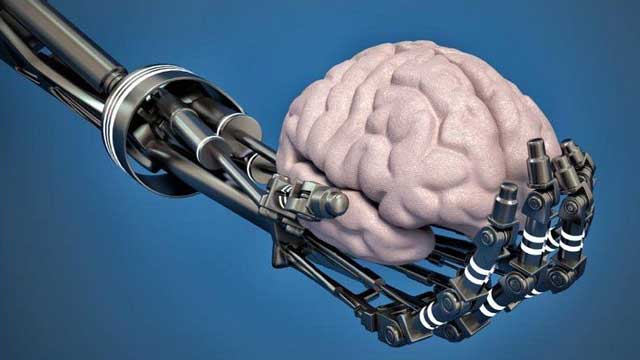Cyborgs might still be a ways away, but “biohybrid” bots might be closer than you think, according to an international team of researchers.

The term cyborg refers to any biomechanical entity that was born organic and later received mechanical augmentations, either to restore lost functionality or to enhance its abilities. It’s possible that cyborgs will become commonplace in the future, as people turn to robotic prosthetics to replace lost limbs, explore whole new senses through mechanical augmentation, or by plugging into a Neuralink-like artificial mind.
But there’s also a reverse to the cyborg coin, the biohybrids — robots enhanced with living cells or tissues to make them more lifelike. Biological systems can bring a lot to the biohybrid table, such as muscle cell augmentations to help the bots perform subtle movements, or bacterial add-ons to help them navigate through living organisms — and unlike cyborgs, biohybrids are coming on-line today, according to a new metastudy.
Meatbots
The paper, penned by an international group of scientists and engineers, aims to get an accurate picture of the state of biohybrid robotics today. The field, they report, is entering a “deep revolution in both [the] design principles and constitutive elements” it employs.
“You can consider this the counterpart of cyborg-related concepts,” said lead author Leonardo Ricotti, of the BioRobotics Institute at the Sant’Anna School of Advanced Studies, in Pisa, Italy. “In this view, we exploit the functions of living cells in artificial robots to optimize their performances.”
In recent years we’ve seen robots of all shapes and sizes bringing increasing complexity to bear in both software and hardware. They’re on assembly lines moving and welding heavy metal pieces, and sub-millimeter robots are being developed to kill cancer cells or heal wounds from within the body.
One thing robots haven’t quite gotten right in all this time, however, is fine movement. Actuation, the coordination of movements, proved itself to be a persistent thorn in the side of robotics, the team writes. Robots can handle huge weights with impressive ease and fluidity. Alternatively, they can operate a laser cutter with perfect accuracy each and every time. But they have difficulty coordinating subtler actions, such as cracking an egg cleanly into a bowl, or caressing. Unlike animal movements, which start gently on a micro scale and lead up to large-scale motion, robots’ initial movements are jerky.
Another shortcoming, according to Ricotti, is that our bots are quite power hungry. They can’t hold a candle to the sheer energy efficiency of biological systems, refined by evolution almost to its limits over millions of years — a problem that’s particularly relevant in micro-robots, whose power banks are routinely larger than the robot itself.
Mixing living ‘parts’ into robots can solve these problems, she adds.
The team writes that muscles can provide the fine accuracy actuation and steady movement that robots currently lack. For example, they showcase a group led by Barry Trimmer of Tufts University (Trimmer is also a co-author of the metastudy), that developed worm-like biohybrid robots powered by the contraction of insect muscle cells.
Co-author Sylvain Martel, of Polytechnique Montréal, is trying to solve the energy issue by outfitting his bots with bacterial treads. His work used magnetotactic bacteria, which move along magnetic field lines, to transport medicine to cancer cells. The method allows Martel’s team to guide the bacteria using external magnets, allowing them to target tumors or cells that have proven elusive in the face of traditional treatments.
Steel and sinew
Biohybrid robotics comes with its own set of drawbacks, however. Biological systems are notoriously more fragile than metal-borne robots, and they prove to be the weakest link in hybrid systems. Biohybrids can only operate in temperature ranges suitable for life (so no extreme heat or cold), are more vulnerable to chemical or physical damage, and so on. In general, if a living organism wouldn’t last too long in a certain place, neither would a biohybrid.
Finally, living cells need to be nourished, and that’s something we haven’t really learned how to do well in robots yet — so as of now, our biohybrids tend to be rather short-lived. But for all their shortcomings, biohybrid robots have a lot of promise. When talking about a manta-ray-like biobot developed by a team at Harvard last year, Adam Feinberg, a roboticist at Carnegie Mellon University, said that “by using living cells they were able to build this robot in a way that you just couldn’t replicate with any other material.”
“You shine a light, and it triggers the muscles to swim. You couldn’t replicate this movement with on-board electronics and actuators while keeping it lightweight and maneuverable.”
The paper Biohybrid actuators for robotics: A review of devices actuated by living cells has been published in the journal Science Robotics.


